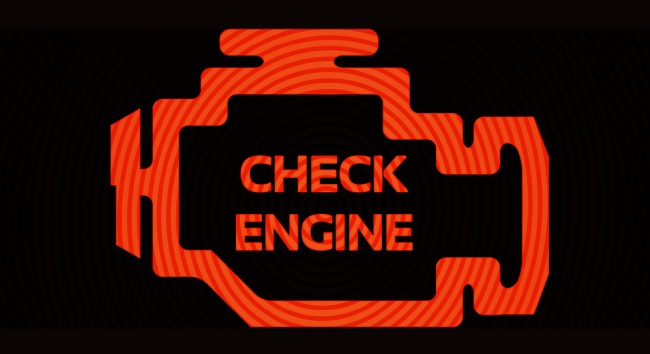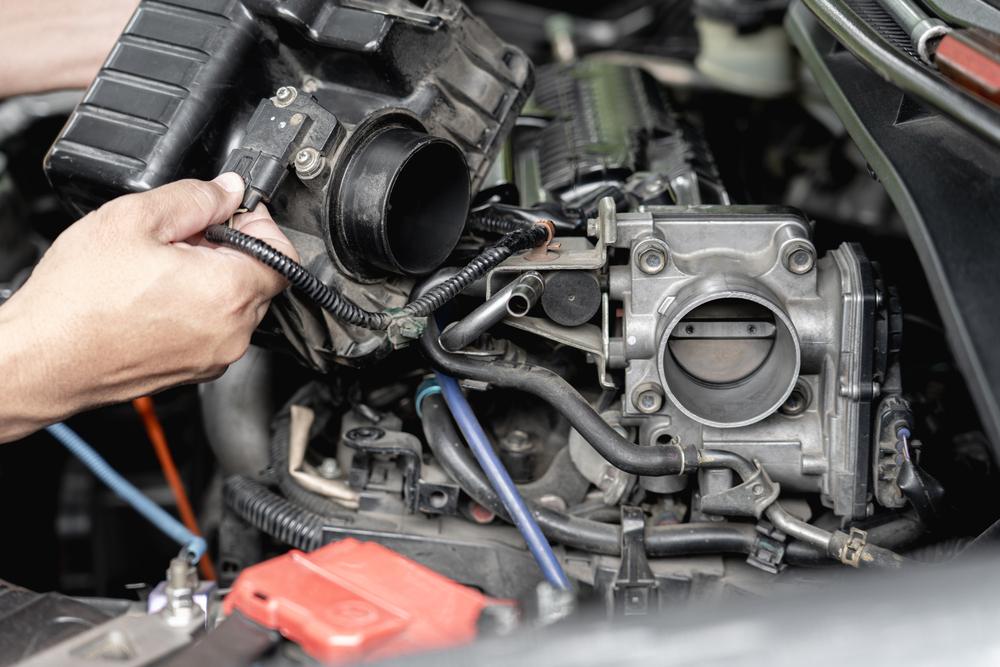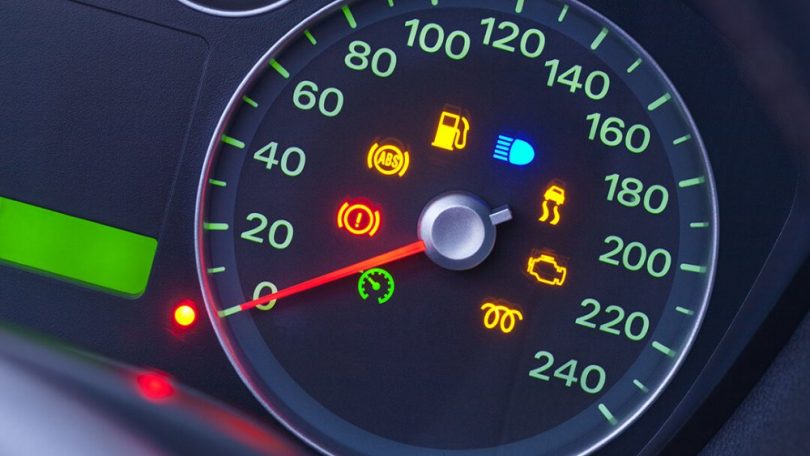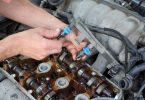The electronic throttle control system is one of the most important yet overlooked systems of a car.
Many among us don’t know or care about it but when something goes wrong with that one system, the butterfly effect that’ll occur throughout the whole car is something that cannot be ignored.
How the System Works
The electric throttle control system is a technology that electronically connects the gas pedal to the throttle. When things go wrong, your car usually has a way of warning you.
In certain vehicles, a lightning bolt with reverse parenthesis shows up, but it could be a wrench light or search engine light.
It’s normal for the throttle control light to light up briefly whenever you start your car and then go off. If your light stays on, or comes on whenever you’re driving through, then something needs to be fixed.
Indicators of a Faulty Electronic Control

1. Lowered Gas Mileage
An abrupt drop from what is normal from the car is a sign that your throttle control system is faulty.
This is because the electronic control regulates the amount of air sent to the combustion chamber in the engine. This optimizes fuel input and makes sure that the car is as efficient as it can be.
If the electronic control malfunctions, then the fuel input becomes generic. The car still runs, and the engine gets fuel, but the system is no longer optimized for driving conditions.
This is not optimal as you burn more fuel than needed, which in turn means you spend more money than you need to on fuel.
2. Issues Accelerating
The electric throttle control regulates how much the throttle body opens when you press the accelerator pedal down.
If the controls are faulty, acceleration won’t work as it should when the pedal is pushed down.
The system doesn’t fail completely right away, but the longer you wait, the worse it gets.
At some point, a full-blown failure would occur that could be problematic in certain situations.
3. Unpredictable Idling Patterns
In some cases, faulty controls cause a throttle body that never closes to a regular idle. Instead, the throttle body might only close partially, which could cause a high idle.
In other cases, the throttle might close too much, sometimes while driving, which could cause the engine to stall out.
This happens because the engine is not getting enough air. If the engine doesn’t die completely, it might sputter as it struggles. This is one of the more noticeable “symptoms”.
4. Flashing Indicator Light
The indicator light is a one way to tell if there is something wrong with the system. The light usually comes on when the computer detects problems with its sensors or circuits.
The indicator light, like most computers, sometimes malfunctions and illuminates when there is no issue present. A quick scan by a mechanic can help tell if the problem is real or not.
5. Faulty Throttle Performance
Throttle control is handled by the electronic system. If the electronic part is faulty, it only makes sense that the actual controls don’t work properly.
Acceleration becomes inconsistent, which can lead to accidents.
Frequent Causes of a Defective Throttle Control
1. Defective Throttle Control Sensor
Most vehicles are filled with multiple sensors.
Although this enables multiple things that help the car run better, a downside is that one sensor going wrong can crash the whole system. This is what happens with the throttle control’s sensor.
The sensor helps the throttle control dictate the perfect timing and fuel ratios so it can adjust everything else.
When the sensor is faulty, this can’t happen and the whole engine suffers.
2. Damaged Accelerator Pedal Position Module or Sensor
Along with the sensor, the throttle control also has an accelerator pedal sensor and module.
The accelerator pedal sensor sends the present position of the accelerator pedal to the module.
The module needs the information from the sensor to communicate with the throttle position sensor so the right throttle position is established.
Even one component not working properly can mess up the whole system.
3. Throttle Body Stuck
Even if the electronic components work properly but the throttle body is damaged or stuck, the system won’t work.
A mechanical and visual inspection might help determine whether the throttle body is functioning properly.
Check for visual obstructions and simply try to use the throttle body normally. It should work easily and close automatically on release.
Resetting Your Electronic Throttle Control
Step 1 – Make sure the accelerator pedal is fully released. The first thing you want to do is notify your computer system of your gas pedal’s new position and it’s closed position.
Step 2 – Turn the ignition on and then turn it off. Turn your ignition on without igniting your engine for about 2 seconds and then turn it off for 10. Repeat once more.
Step 3 – Turn the ignition on again for 7 seconds and then press the gas pedal five times before releasing for 5 seconds.
Step 4 – Relax for 7 seconds and now press the gas pedal down for 20 seconds, till the engine light stops fluctuating and stays on. 3 seconds after the light stops fluctuating, let go of the pedal.
Step 5 – Start the engine and allow it to idle. After 20 Seconds, rev the engine multiple times to check idle speed. If it doesn’t work, turn off the ignition for 60 seconds and repeat the steps.
What if my Electric Controller Goes Bad?
If your throttle controller is truly damaged, and you have tried to reset it with no avail, there’s only one more solution – visit a mechanic.
The controller will most likely need to be replaced and will cause you more grief and to spend more money in the long run.
A faulty controller also causes danger to the people who you drive the car around. The stalling, acceleration issues, and overall unpredictability are a recipe for disaster.
It would only be a matter of time before something disastrous happened.
Signs Your Throttle Body Needs to be Cleaned

1. Too much grime
This phenomenon, also known as coking, creates a rough surface that disturbs the air-fuel flow and causes the engine to be less effective.
2. Bad fuel economy
If fuel economy is reduced by more than 10-15%, that is a sign that the throttle body is clogged. This impacts the effectiveness of the vehicle until a cleaning happens.
3. Inconsistent idle
Poor or low idle is a good indicator of reduced effectiveness. In these cases, the problem is likely dirt causing irregular airflow into the system, leading to a fluctuating idle speed.
4. Unstable Acceleration
Pushing down on the accelerator pedal increases the flow of air and fuel into the engine. Dirt or coking on the throttle body prevents the car from gaining power from combustion.
Signs of this may be the car taking longer than usual to get going or speed picking up sporadically.
5. Electrical Problems
If the throttle body’s electronic sensor is covered in dirt or grime, this results in unnecessary corrections to the air-fuel mixture.
This could put the car into a secondary power reduced mode that can only be fixed by a service mechanic.
6. Airflow Disruptions
Dirt and grime may cause airflow and pressure issues in the throttle body. There may also be a throttle stop that has been adjusted incorrectly.
Either way, uneven airflow causes pressure problems that may cause poor performance.
7. Check Engine Light
If the throttle body’s performance is faulty, this alerts the electronic throttle control, which illuminates the check engine light on your dashboard.
Since the computer could be faulty, it’s best to do manual checks to see if there’s dirt or carbon around the system.
FAQs
1. Can you drive with a defective electronic throttle control?
Ans. Yes, you can, but it should be to a repair shop. The problems that come with a faulty electronic control can be hazardous to you, the driver, and others on the road.
2. How much is it to repair an electronic throttle control?
Ans. The average cost of a repair is between $577 and $671. It is quite pricey because of the system’s importance.
3. Can you drive with a messed-up throttle body?
Ans. Technically, yes, but warning lights would be on. You might also be forced into the limp mode where you might not be able to go faster than 45Mph.
4. How often should you clean your throttle body?
Ans. You should clean it every five to ten years or so, to be on the safe side.
5. What’s inside a throttle position sensor?
Ans. These sensors contain a power supply, a ground, and a signal return wire.
6. What does “service electronic throttle control” mean?
Ans. This means something in the system needs to be fixed. It could be the pedal, body, or wirings.
7. What does it mean when your electronic throttle light comes on?
Ans. This means there is an issue with the throttle system (accelerator pedal, throttle body, and wirings).
8. Where is the electronic throttle control sensor located?
Ans: As the sensor (TPS) needs to monitor the throttle position directly, it generally is installed on the butterfly shaft/spindle and monitors the engine’s air intake.
9. What are the two sensors on a throttle body?
Ans: The throttle body has two sensors located within it. They are:
- Throttle body position sensor (TPS)
- Throttle body temperature sensor
10. Can throttle control make the car not start?
Ans: Yes, it can. It does an important task by regulating the air intake of your engine. It can even stop your car from starting. The sooner you fix a bad throttle body, the better it would be for your car.
11. Do fuel additives clean the throttle body?
Ans: No, adding fuel additives to the fuel tank won’t clean the throttle body because oil doesn’t go through it.










Leave a Comment